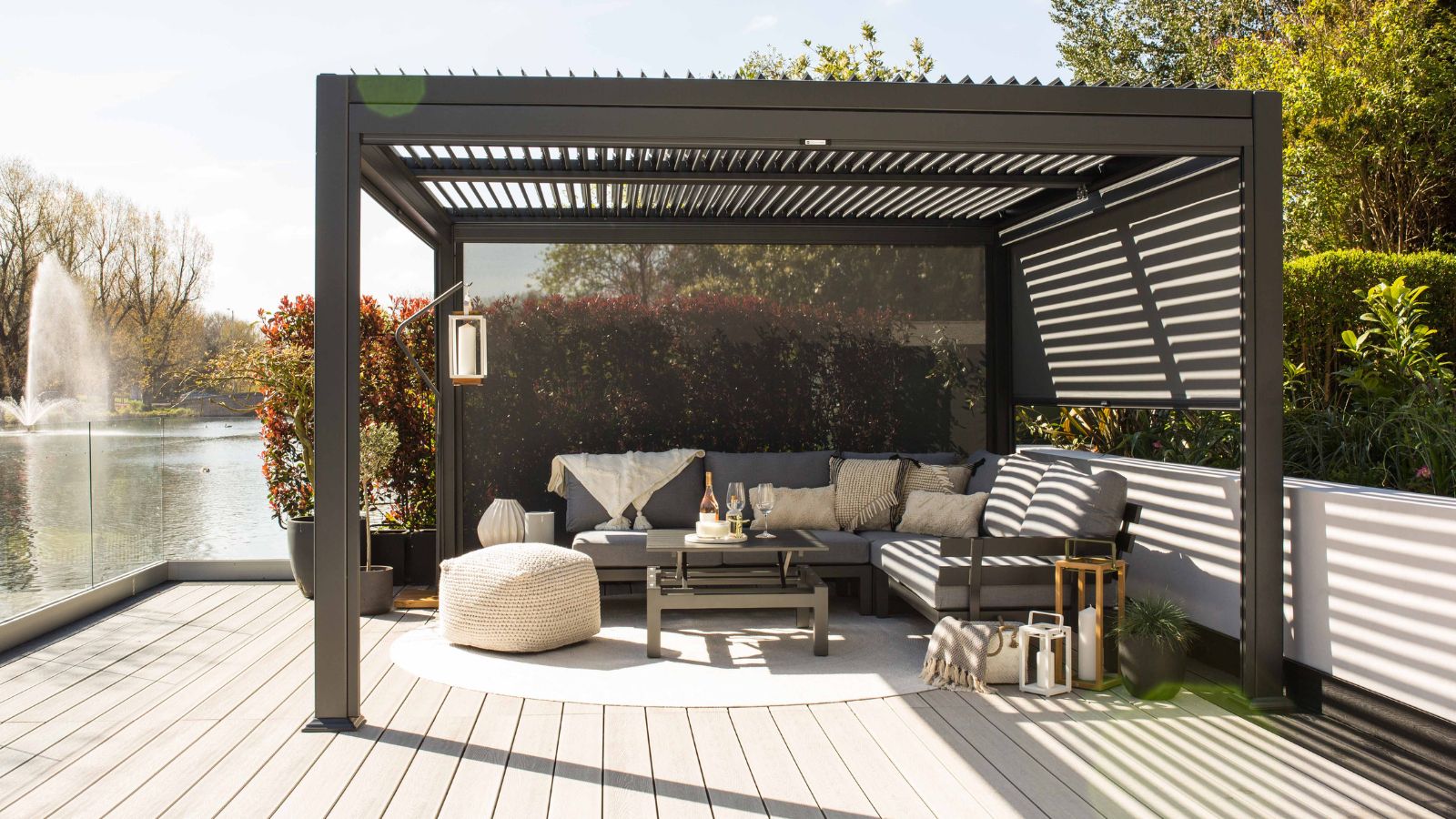Painting over lime plaster: The do’s and don'ts you need to know
The process for painting over lime plaster is similar to painting any other plaster, but with some subtle, must-know differences that we reveal here

Painting over lime plaster walls and surfaces is something you could well be thinking about if you’ve got lime plaster in your home. It’s a traditional wall finish that differs from the more commonly used gypsum plasters found in newer homes. It’s eco-friendly, can combat damp and acts as a natural dehumidifier.
But, you’ll need to make sure that your prepping and painting it the right way. Cut corners or choose the wrong paint and you’ll be dealing with unwanted issues with your lime plaster and getting ready for a repaint in no time.
Here we tell you how to prep lime plaster, what paint to use and answer some commonly asked questions.
Painting over lime plaster: Should you do it?
Yes. You can paint over new and old lime plaster but there are a few considerations that you need to take into account. The process is similar to painting new plaster, but there are a few subtle differences that need to be followed to make sure that your new paint job stays looking good.
Lime plaster differs from more commonly used gypsum/cement plasters found in most homes, especially newer homes. Lime plaster has a different drying process to gypsum and cement, which means it takes a lot longer to dry and cure.
How long will depend on what type of lime plaster you use but as a general guideline expect to leave it for at least four weeks to ensure that it is fully cured. It may take even longer depending on the thickness and environmental conditions. However, once the plaster is ready you need to use a suitable ‘breathable’ paint to ensure that moisture doesn’t get trapped in the plaster causing issues.

With a passion for all things creative, colour expert Bailey Oates brings a wealth of expertise to the eco-friendly paint company Earthborn. Specialising in interior design and photography, Bailey has been an integral part of the Earthborn marketing team for over three years, where she is responsible for creating blog inspiration, marketing materials, and stunning visuals. Holding a BA Hons in Spatial Design from Liverpool John Moore's University, Bailey's keen eye for colour and design shines through in everything she does.
What is the best paint for lime plaster?
"When it comes to painting lime plaster, there's no substitute for the benefits of clay-based paint.” explains Bailey Oates, Colour Expert at Earthborn. “Unlike other types of paint, clay-based paint is designed to breathe, which means it allows moisture to escape from the wall, preventing damage and ensuring a long-lasting finish. Additionally, lime plaster doesn't require primer, which simplifies the painting process.”
They finish by sharing, “Claypaint offers exceptional ultra-matt coverage that is fully compatible with lime plaster, resulting in a luxurious finish that is both functional and aesthetically pleasing."
It is worth noting that the larger paint manufacturers like Dulux, rarely make paint for lime plaster. Smaller paint producers such as Farrow & Ball and Little Greene have specialist paint specifically designed for lime plaster.
How do you prep and repair lime plaster for painting?
Like all plastered walls the surface needs to be clean and free from dirt, grime, grease and dust. The first step is to brush down a wall to get rid of dust, cobwebs and dirt. If needed, wash down the wall with a wet sponge and leave to dry. For more stubborn marks and unwanted ridges use a fine sandpaper, or a sandpaper sponge to remove.
If the plaster has any hairline cracks or small holes you can use a lime putty or an interior all-purpose filler to fill. For larger repairs, remove loose plaster and reapply the plaster. Ideally use the same type of lime plaster to avoid cracking issues.
If the plaster is flaky or powdery and needs stabilising before painting you can use a primer like this Earthborn Silicate Primer from Amazon, which is suitable for surfaces including lime plaster and allows walls to breathe.
Do I need to mist coat lime plaster?
A mist coat is the first coat of paint that goes onto new plaster and provides a base and better adhesion for the following coats of paint. It is a watered down version of the paint that you are going to use on your lime plaster. Before you apply a mist coat you need to make sure that the plaster is fully dried and cured.
Get a paint kettle or bucket to mix the mist coat. Use a ratio of eight parts paint and two parts water – or a seven parts paint and three parts water mix, both are suitable for a mist coat. Before applying the mist coat, moisten the surface. Use a water spray bottle with a mist spray or use a paintbrush and flick clean water onto the surface.
To finish, apply the mist coat with a roller and/or paintbrush and leave to dry for at least a couple of hours. Ideally leave for longer before adding a full strength coat of paint.
Painting over lime plaster FAQs
Can I use emulsion paint on lime plaster?
Yes and no. Standard everyday emulsion paint typically contains vinyl or plastic that will seal the lime plaster and trap any moisture behind the paint, which will lead to issues further down the line.
However, there are specialist emulsion paints that are suitable for lime plaster such as Edward Bulmer natural emulsion, which is free of plastic and microplastics which means a film won't form on a wall allowing the surface to breathe. Or Mylands Matt Emulsion which is breathable and infused with real crushed Carrara marble to give it texture.
What is limewash paint?
Limewash paint is a popular choice for lime plaster because it is breathable, environmentally-friendly (contains no VOCs), non-toxic, almost odourless and is mould resistant.
It uses a different formula to standard paint and doesn’t cover a surface like an everyday paint. It is more translucent which means that when applied it isn't a solid colour and gives off a more subtle finish.
What happens if you paint lime plaster too soon?
If lime plaster is not fully dried and cured before you paint it can lead to adhesion problems. Moisture will get trapped behind the paint and lead to bubbling and flaking. Using the wrong paint will also produce a similar problem. The paint won't adhere as well and will start to lift off the surface and will need to be repainted.
With the right prep and paint you need to know the right techniques to get the best finish on your lime plaster. Check out the following guides to help make it happen. How Much Paint do I Need?, Painting a wall and How to paint a room.
Get the Homebuilding & Renovating Newsletter
Bring your dream home to life with expert advice, how to guides and design inspiration. Sign up for our newsletter and get two free tickets to a Homebuilding & Renovating Show near you.
Steve Jenkins is a freelance content creator with over two decades of experience working in digital and print and was previously the DIY content editor for Homebuilding & Renovating.
He is a keen DIYer with over 20 years of experience in transforming and renovating the many homes he has lived in. He specialises in painting and decorating, but has a wide range of skills gleaned from working in the building trade for around 10 years and spending time at night school learning how to plaster and plumb.
He has fitted kitchens, tiled bathrooms and kitchens, laid many floors, built partition walls, plastered walls, plumbed in bathrooms, worked on loft conversions and much more. And when he's not sure how to tackle a DIY project he has a wide network of friends – including plumbers, gas engineers, tilers, carpenters, painters and decorators, electricians and builders – in the trade to call upon.

